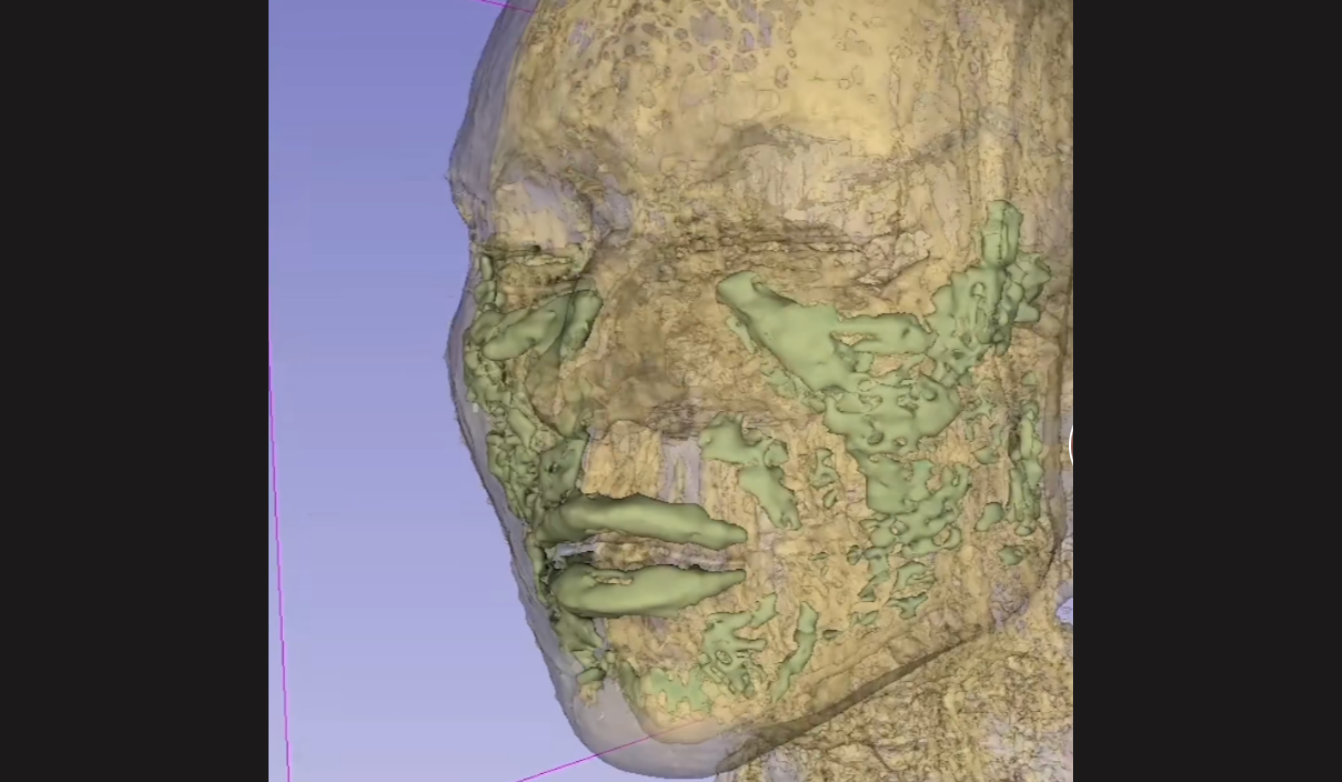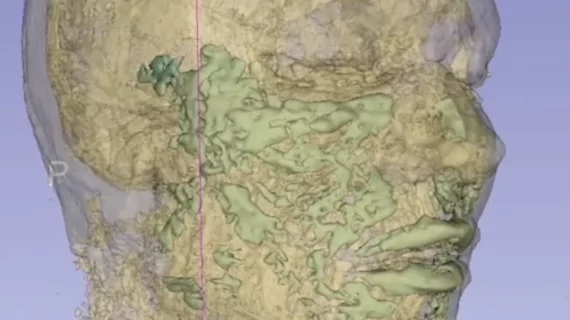Imaging of woman with facial fillers prompts questions about whether they actually dissolve over time
Cosmetic facial fillers made from hyaluronic acid might not dissolve as quickly as previously believed, warns a California plastic surgeon.
Kami Parsa, MD, an oculoplastic expert in Beverly Hills, recently used MR images of a patient who had received multiple rounds of hyaluronic acid-based filler in her face to debunk the notion that fillers disappear naturally over time. Not only does this not happen for every patient, but for some, a filler can actually expand its presence.
In a post on social media platform TikTok, Parsa, who has over 130,000 followers on the app, shared a 3D MR image of a 33-year-old woman who had received a total of 12 ccs of filler over six years. Large patches of green can be seen throughout the woman’s face, particularly within her lips and in and around her cheeks.
Parsa explains that it is not the presence of the filler that caught his eye, but rather the amount of filler observed that he found interesting.
“What’s interesting here is that when we did volumetric analysis—that is when we measured the amount of filler, the volume that was there—it ended up being close to 28 cc, which is more than twice the amount she said was injected,” Parma noted. “What this shows us is that hyaluronic acid fillers are hydrophilic—that means they love water—and they also cause tissue expansion.”
The video has been viewed more than 9 million times since it was posted earlier in July and garnered nearly 5,000 comments. Feeling misled by their own experience with getting facial filler, many of the commenters suggested that the imaging Parsa shared offered a good visual depiction of the long-term effects of filler. Some of them even stated that the video has dissuaded them from getting the procedure.
Parsa is not the only person questioning the long-term effects of hyaluronic fillers. There are several other videos on the app delving deeper into fillers potentially expanding over time.
Watch the full video below:


